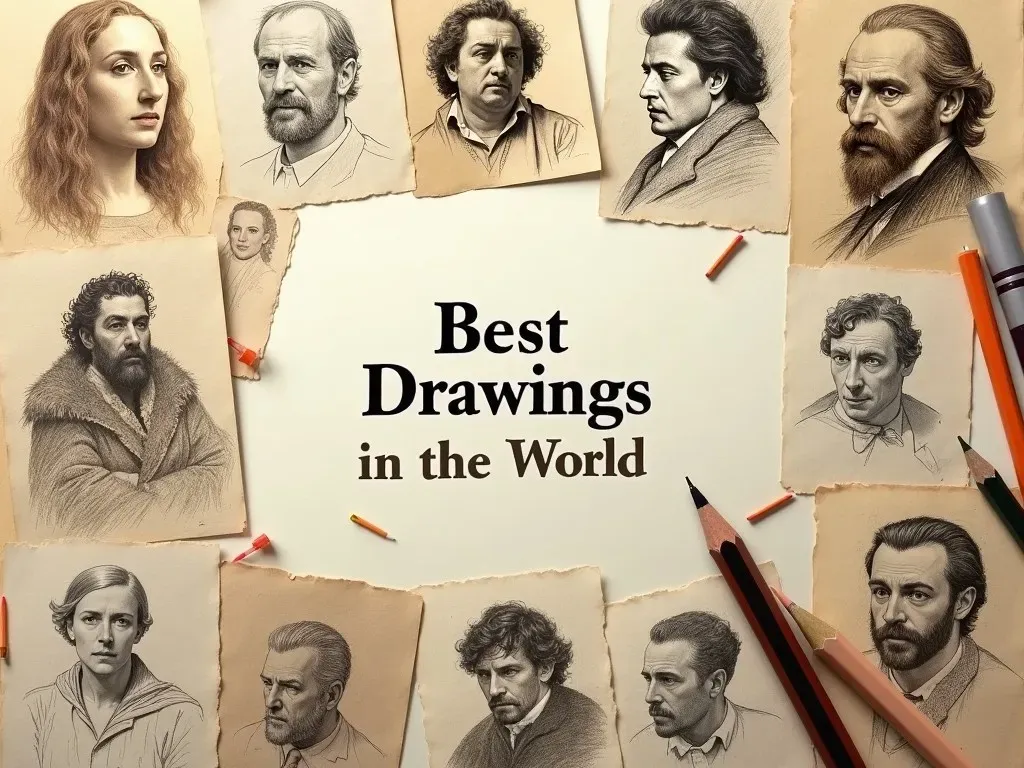Famous sketches by famous artists are a window into the creative processes and artistic prowess that shaped the history of art. Renowned artists across eras have left their mark through sketches that, while often preliminary, encapsulate the essence of their genius. From Leonardo da Vinci to Pablo Picasso, these sketches provide insight into their innovative Techniques and ideas, standing as a testament to their artistic journey.
Legendary Artists and Their Iconic Sketches
Below is a list of well-known artists, along with their famous sketches that have became landmarks in art history:
| Artist | Famous Sketch | Year | Medium |
|---|---|---|---|
| Leonardo da Vinci | Study for The Last Supper | 1495-1498 | Charcoal, ink |
| Michelangelo | Studies for the Sistine Chapel | 1512 | Red chalk |
| Albrecht Dürer | Knight, Death, and Devil | 1513 | Engraving |
| Pablo Picasso | Guernica Sketch | 1937 | Pencil on paper |
| Vincent Van Gogh | Starry Night Sketch | 1888 | Oil on canvas |
| Edgar Degas | Dance Class | 1874 | Pastel |
| Henri Matisse | The Dance | 1910 | Pencil and ink |
The Techniques Behind the Great Drawings
Famous sketches often serve as a study for larger works, but they are masterpieces in their own right. Artists employ various techniques to convey form, movement, emotion, and light. For instance, Leonardo da Vinci’s sketches frequently showcase his groundbreaking use of light and shadow (chiaroscuro), bringing depth to his figures. Similarly, Albrecht Dürer’s detailed engravings exhibit his mastery of line and texture, making use of cross-hatching to create dimensionality.
Notable Techniques in Famous Sketches
- Chiaroscuro: The use of strong contrasts between light and dark to give the illusion of depth.
- Cross-hatching: A technique where lines are drawn closely together to create shading and texture.
- Gestural Drawing: Captures the essence of a subject in motion, often used by artists like Edgar Degas.
- Dynamic Composition: Arranging elements in a sketch to lead the viewer’s eye strategically through the piece, often seen in Matisse’s works.
Iconic Subjects of Famous Sketches
Famous sketches encompass a wide range of subjects. Many artists preferred to explore human forms and emotions while others focused on nature and landscapes. Here are some noteworthy subjects dissected across iconic sketches:
| Subject | Artists | Description |
|---|---|---|
| Human Figures | Michelangelo, Degas | Captured grace, motion, and fluidity. |
| Nature | Van Gogh, Cezanne | Explored the beauty of landscapes and light. |
| Still Life | Matisse, Picasso | Depictions often included everyday objects. |
| Portraits | Da Vinci, Rembrandt | Studies of human emotion and identity. |
Learning from Master Sketches
For aspiring artists, studying these famous sketches can illuminate ways to improve drawing skills. Here are some lessons derived from the sketches of great artists:
- Observation is Key: Master artists spent countless hours observing the world around them, suggesting that honing observational skills is fundamental to sketching.
- Experimentation: Many artists tried different mediums—from charcoal and pencil to ink—demonstrating that experimenting with tools can lead to exciting discoveries.
- Starting with Simplification: Artists often begin with basic shapes and outlines before moving to intricate details, a helpful technique for students learning how to break down complex subjects.
Frequently Asked Questions (FAQ)
Q: What is the significance of sketches in an artist’s work?
A: Sketches allow artists to explore concepts and ideas without the finality of a completed piece. They serve as a playground for creativity, problem-solving, and skill development.
Q: Are all famous sketches preparatory for larger works?
A: While some sketches serve as preparation for paintings or sculptures, others are standalone pieces appreciated for their artistry and expressiveness.
Q: Which artist is known for their famous life drawings?
A: Michelangelo is renowned for his exceptional life drawings that exhibit a deep understanding of human anatomy and form.
Q: What mediums are commonly used in famous sketches?
A: Artists utilize a variety of mediums including pencil, charcoal, ink, and pastel, each providing distinct textures and qualities to the sketches.
Q: Why do some sketches become more famous than the final artworks?
A: The immediacy and rawness of a sketch can resonate more with audiences. It reveals the artist’s thought process and emotional state during creation, leading to a unique connection with viewers.
Great Drawing Artists of All Time
The hallmark of greatness in art often lies in the ability to convey ideas through simple lines. Below are some of the most influential drawing artists whose sketches have left a lasting legacy:
- Leonardo da Vinci
- Michelangelo
- Pablo Picasso
- Albrecht Dürer
- Rembrandt van Rijn
- Vincent van Gogh
- Egon Schiele
Their contributions have shaped the evolution of drawing techniques and the appreciation of sketches as standalone works of art.
Conclusion
Famous sketches by famous artists remain a vibrant testament to the evolution of artistic expression. They provide invaluable insights and draw our attention to the raw creativity that exists behind the scenes, allowing art enthusiasts and learners to appreciate the intricate journey of artistic mastery. To explore more about famous sketches, visit My Modern Met and uncover the stories that have shaped art history.
